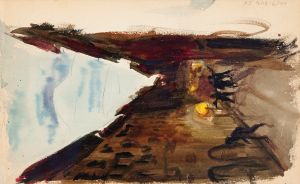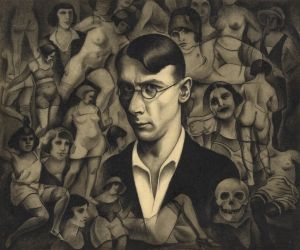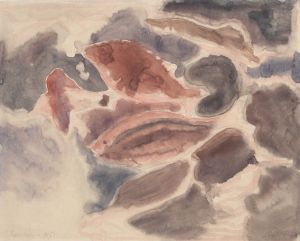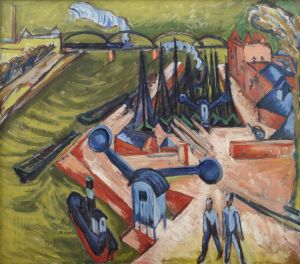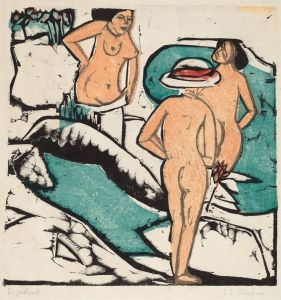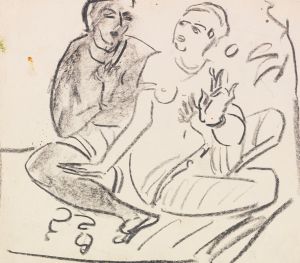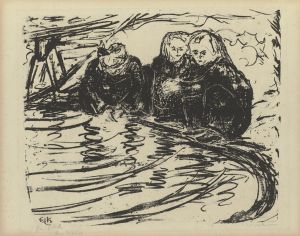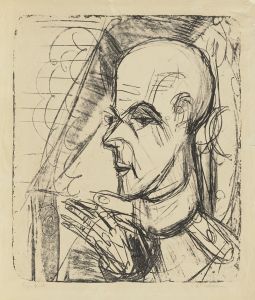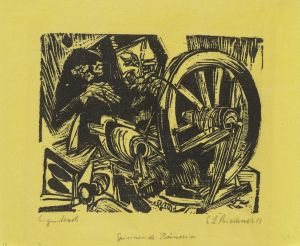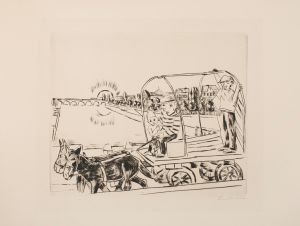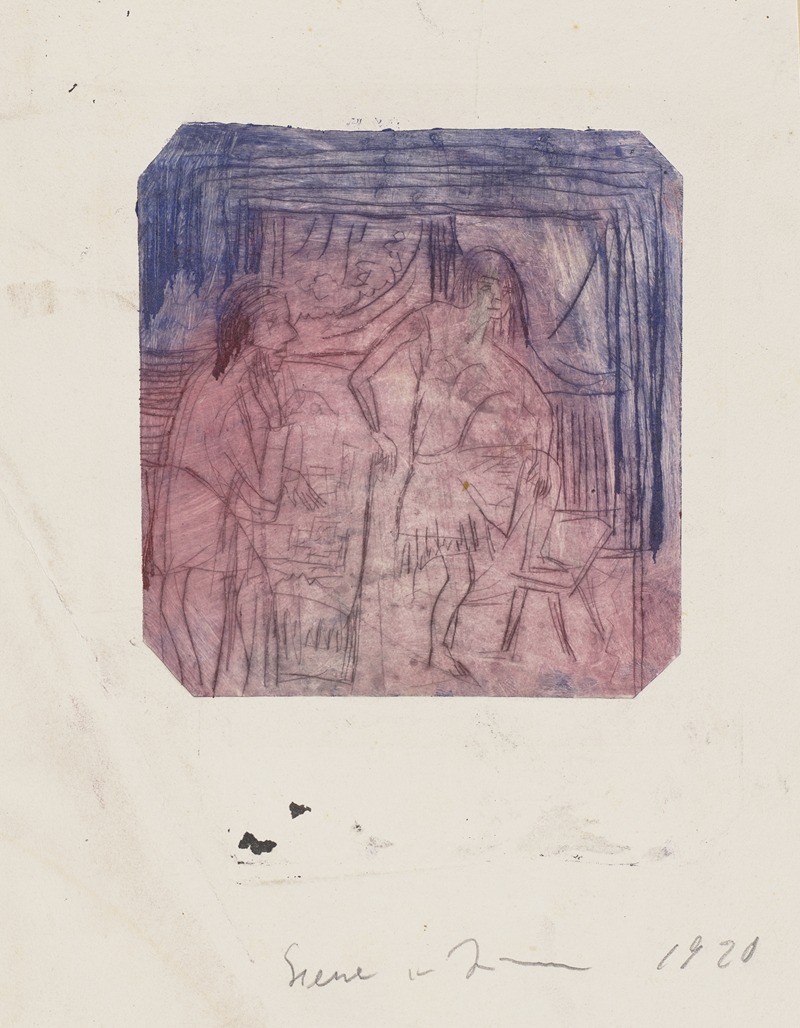
Szene im Zimmer
A hand-painted replica of Ernst Ludwig Kirchner’s masterpiece Szene im Zimmer, meticulously crafted by professional artists to capture the true essence of the original. Each piece is created with museum-quality canvas and rare mineral pigments, carefully painted by experienced artists with delicate brushstrokes and rich, layered colors to perfectly recreate the texture of the original artwork. Unlike machine-printed reproductions, this hand-painted version brings the painting to life, infused with the artist’s emotions and skill in every stroke. Whether for personal collection or home decoration, it instantly elevates the artistic atmosphere of any space.
Ernst Ludwig Kirchner, a prominent German expressionist painter and one of the founding members of the artist group Die Brücke, created the artwork "Szene im Zimmer" (Scene in the Room). This painting is a notable example of Kirchner's exploration of modern life and his distinctive style, which is characterized by bold colors, dynamic compositions, and expressive forms.
"Szene im Zimmer" was painted during a period when Kirchner was deeply engaged with the themes of urban life and the human figure. His work often reflects the tensions and dynamism of early 20th-century Berlin, where he spent a significant part of his career. Kirchner's art is known for its vivid portrayal of the psychological and emotional states of his subjects, often set against the backdrop of the rapidly changing modern world.
In "Szene im Zimmer," Kirchner employs his signature use of vibrant colors and sharp, angular lines to create a sense of movement and immediacy. The painting typically features figures in an interior setting, capturing a moment of interaction or introspection. Kirchner's use of color is not merely decorative but serves to convey mood and emotion, a hallmark of expressionist art. The figures in the painting are often depicted with elongated forms and exaggerated features, emphasizing their emotional states and the psychological undercurrents of the scene.
Kirchner's work was heavily influenced by non-European art, particularly African and Oceanic art, which he admired for its perceived authenticity and emotional directness. This influence is evident in his approach to form and composition, as seen in "Szene im Zimmer," where the figures and their surroundings are stylized to enhance their expressive power.
The context of Kirchner's life during the creation of "Szene im Zimmer" is also significant. The early 20th century was a time of great social and political upheaval, and Kirchner, like many of his contemporaries, was affected by these changes. His work often reflects a sense of anxiety and alienation, capturing the complexities of modern existence. Kirchner's personal struggles, including his experiences during World War I and his subsequent health issues, also informed his artistic output, adding layers of depth to his exploration of human emotion and experience.
"Szene im Zimmer" is a testament to Kirchner's ability to convey the intensity of human emotion through his art. It stands as an example of his contribution to the expressionist movement, which sought to break away from traditional artistic conventions and explore new ways of representing reality. Kirchner's innovative use of color, form, and composition has left a lasting impact on the art world, influencing generations of artists who followed.
Today, Kirchner's works, including "Szene im Zimmer," are celebrated for their boldness and emotional depth. They are housed in major art collections and museums around the world, where they continue to be studied and appreciated for their artistic and historical significance. Kirchner's legacy as a pioneer of expressionism endures, and his paintings remain a powerful testament to the transformative power of art in capturing the human experience.





